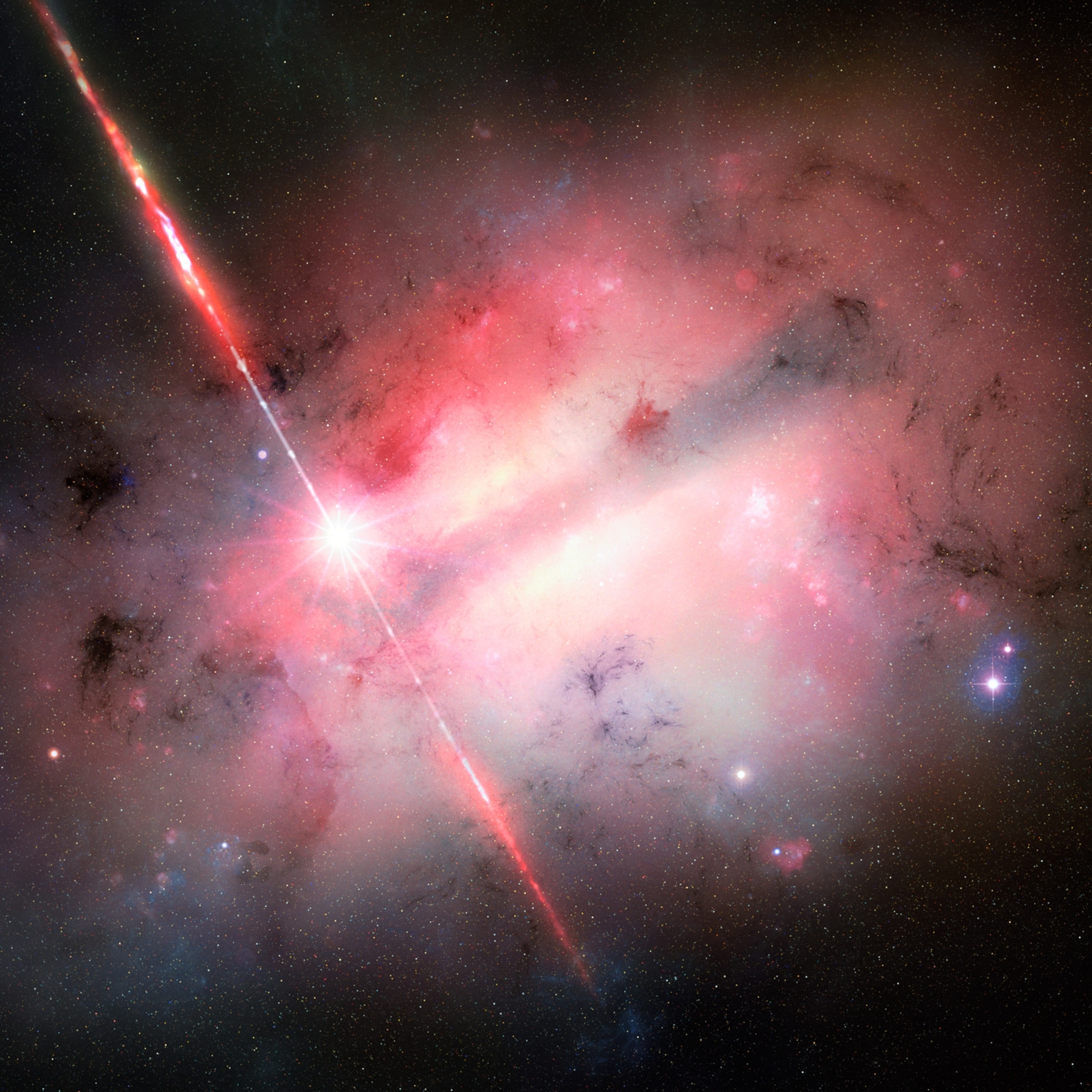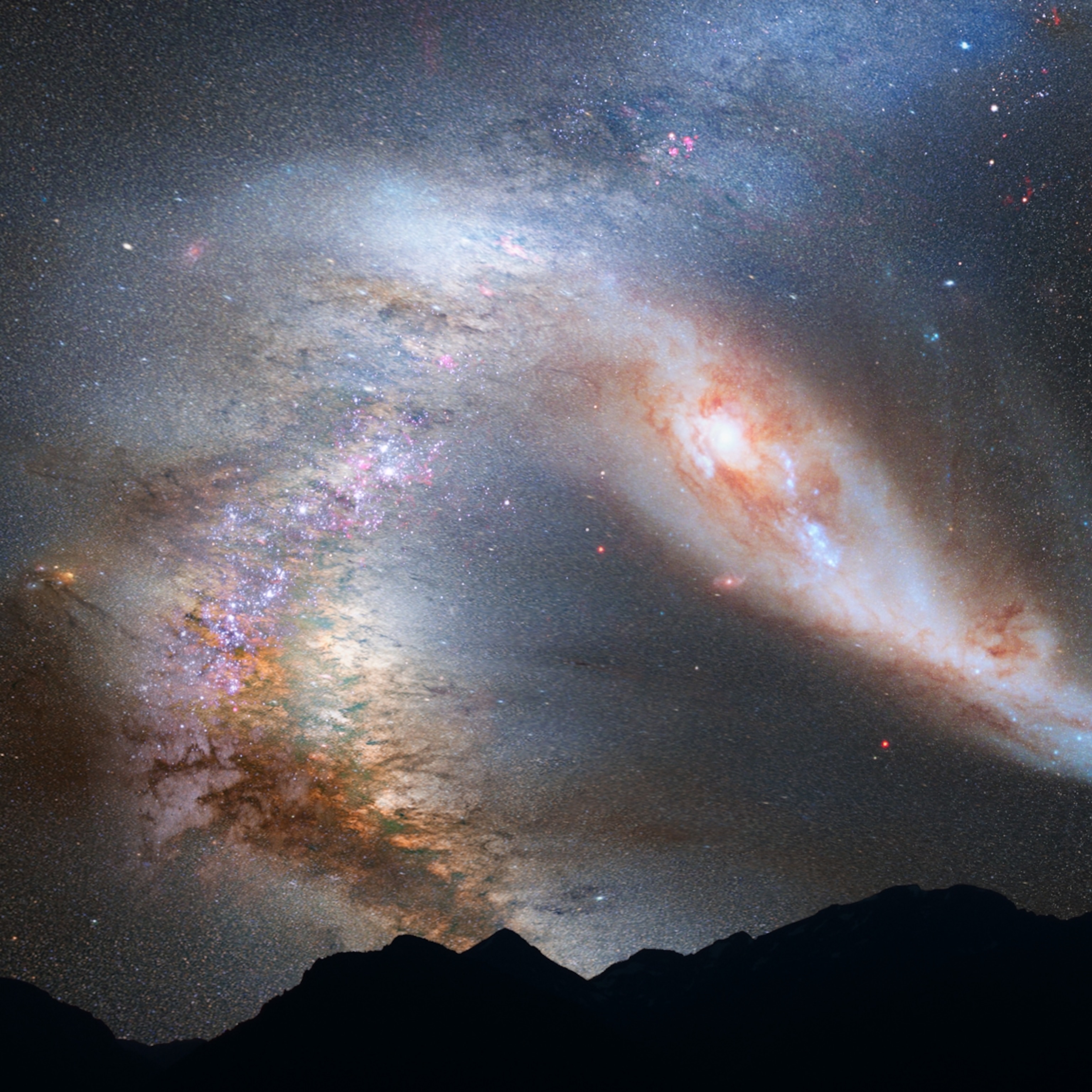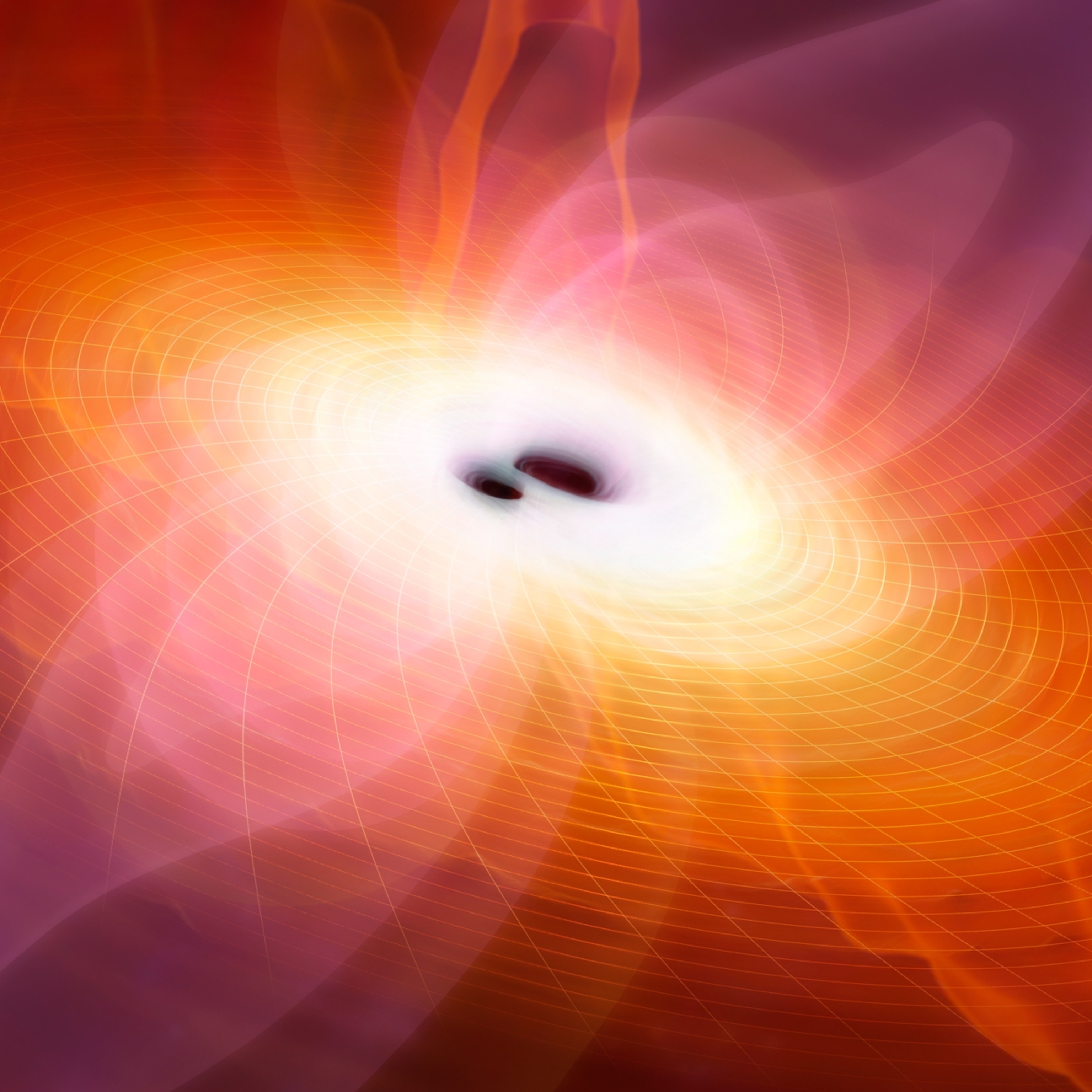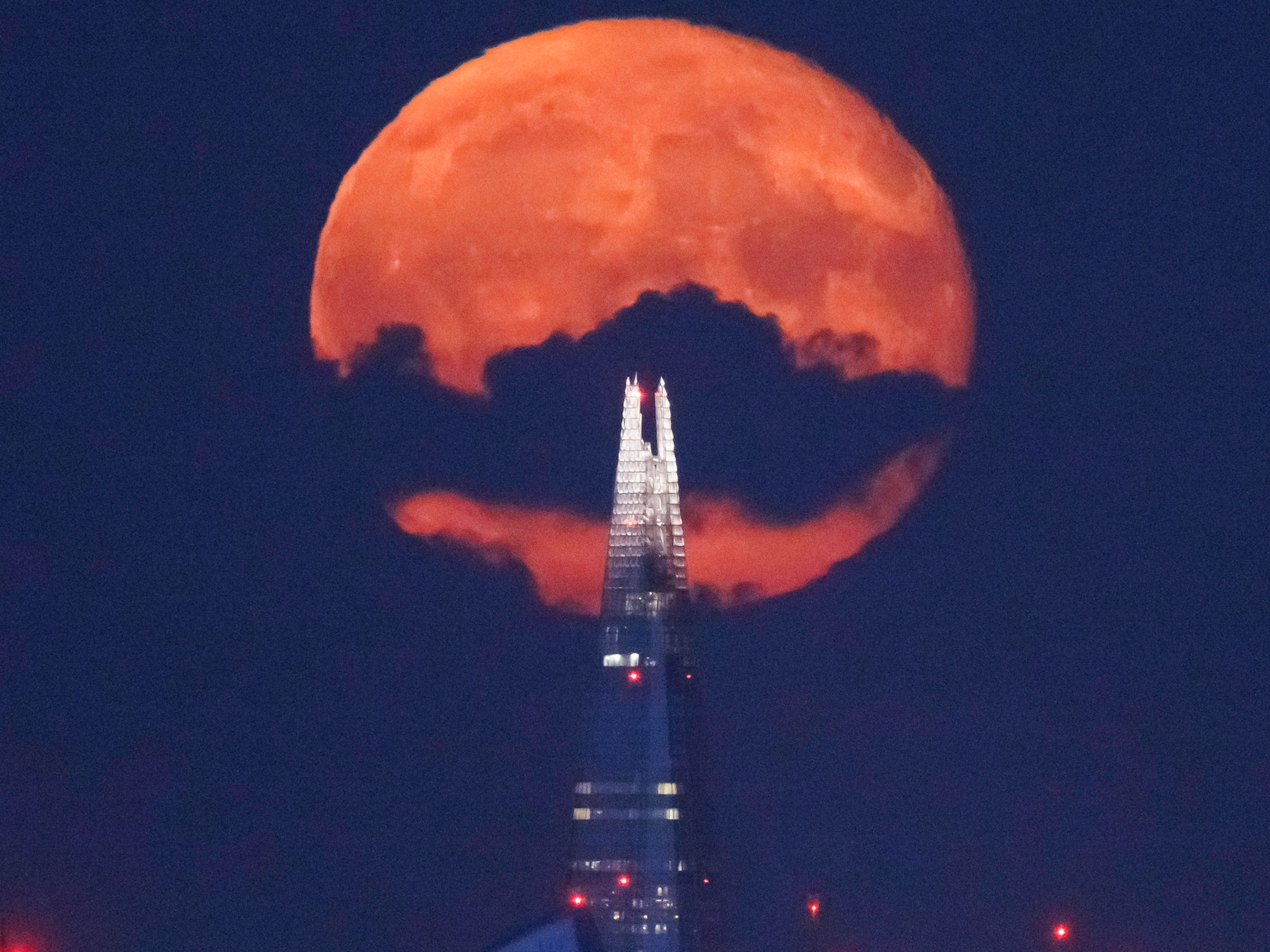
Ancient Stars Unleashed a Space-Time Tsunami Felt on Earth
Like paleontologists describing a fossil, astronomers have teased out the backstory of the first directly detected gravitational waves.
The first direct detection of gravitational waves—the echoes of a collision between two black holes more than a billion years ago—was the astronomer’s equivalent of coming across a spectacular, never-before-seen fossil.
Now, a new simulation of the universe aims to reconstruct that fossil by unraveling how the black holes formed in the first place.
According to the model, described on Wednesday in Nature, the black holes were once extremely massive stars that orbited each other. This pair of gargantuan stars weighed 96 and 60 times the mass of the sun and formed about two billion years after the big bang.
When they died, the stars both became black holes that continued their orbital dance, eventually spiraling into a violent merger.
The cataclysm triggered cosmic shockwaves that rippled through the geometry of space-time itself, ultimately passing through Earth on September 14, 2015. The detection of these waves, made by the Laser Interferometer Gravitational-wave Observatory (LIGO), was the only evidence that the pair had ever lived or died.
Aside from teasing out the backstory of this one historic event, the model shows that black-hole mergers will be LIGO’s biggest sources of gravitational waves, far outnumbering collisions between pairs of ultra-dense neutron stars or between black holes and neutron stars.
The model also predicts a bounty yet to come for gravitational-wave astronomers. If the suggested rates of black hole mergers are correct, LIGO can expect to see about a thousand mergers a year once it reaches full sensitivity, expected by 2020. That would give astronomers the chance to study entire populations of ancient black holes.
“We have a real hope to do gravitational-wave paleontology soon,” says University of Birmingham astrophysicist Ilya Mandel, who wasn’t involved with the study. In essence, astronomers will “learn about the evolution of stars from their remnants, in the way that a paleontologist can figure out how a living dinosaur looked and behaved from its skeletal remnants.”
Black Hole Blender
The model’s story for the September 14 event helps explain why that first detection revealed a pair of black holes of unusual size.
“Our model tells that these were a pair of stars in a somewhat unusual corner of the universe,” says study senior author Richard O’Shaughnessy of the Rochester Institute of Technology. The primeval pocket largely consisted of vast clouds of hydrogen and helium—pristine star stuff—that let the stars remain bigger than the majority that form today.
Newer stars are more contaminated with heavier elements produced by previous generations, making them shed mass more readily. Over billions of years, this celestial shedding limits the sizes of the black holes stars can produce when they die, a problem that the primeval stars didn’t have.
As those stars aged, they expanded, but the more massive one lived faster and died younger. The old, bloated star quickly became fodder for its smaller sibling, whose gravitational forces began siphoning off gases from the larger one’s wispy exterior.
After 3.9 million years of stealing gas from its sibling, the smaller star became the larger of the pair, and its partner soon collapsed on itself to form a black hole about 35 times more massive than the sun.
As the black hole orbited the second star over the course of a million years, it ripped off much of its exterior, enveloping the pair in a shared gaseous haze that the black hole whipped up in a frenzy, like a giant gravity-powered blender.
The black hole’s Cuisinart-like motion sucked energy from its orbit, bringing the pair ever closer together until they were a mere 40 million miles (64 million kilometers) apart, about as far from each other as Mercury is from the sun. The second star died in kind, forming a black hole some 31 times more massive than the sun.
The rest is silence. For ten billion years, the pair orbited each other, softly whispering out energy in the form of miniscule gravitational waves. About 1.4 billion years ago, they finally neared each other enough to enter a death spiral and collide, briefly radiating energy at a rate greater than all the stars in the observable universe combined.
“The biggest explosion in the universe happened in total silence and total darkness,” says lead author Chris Belczynski of Poland’s University of Warsaw.
Darker Options
Already, scientists have lauded the model for its thoroughness and have even begun incorporating the model’s results into their own work, based on a preliminary version of the paper that was published online in mid-February.
But the Nature paper is far from the only one on the hunt for the black holes’ origins. A recent paper in Physical Review Letters explored the daring idea that the black holes may have formed in the instants after the big bang, perhaps lurking as part of a population of “primordial black holes” that could be long-elusive dark matter, the invisible stuff thought to make up 27 percent of the mass in the universe.
“We don't know at this stage whether our fairly speculative model will eventually be confirmed or ruled out by more data,” wrote Simeon Bird of Johns Hopkins University, the lead author of the dark-matter paper, in an email.
“Belczynski's work does much more; it can help explain all kinds of merging black holes, including the recently announced second LIGO event. It's much less speculative, and able to make some concrete predictions, such as the spin of the black hole binaries.”
Mandel, who has worked previously with the authors of the Nature study, says that he finds the paper’s explanation for the black-hole merger perfectly plausible, but he cautions that it is still one among many possibilities.
“We may never know [the origins] for individual mergers, unless the merger has some very special characteristics,” says Mandel. “But we very much hope to be able to tell that there are several subpopulations coming from different [formation] channels,” once LIGO collects more data in the years to come.
Belczynski, for one, is thrilled with how his model has performed—and how much LIGO’s detection has meant for his colleagues in the last few months.
“The entire field got rejuvenated,” says Belczynski. “It’s crazy.”
Follow Michael Greshko on Twitter.








